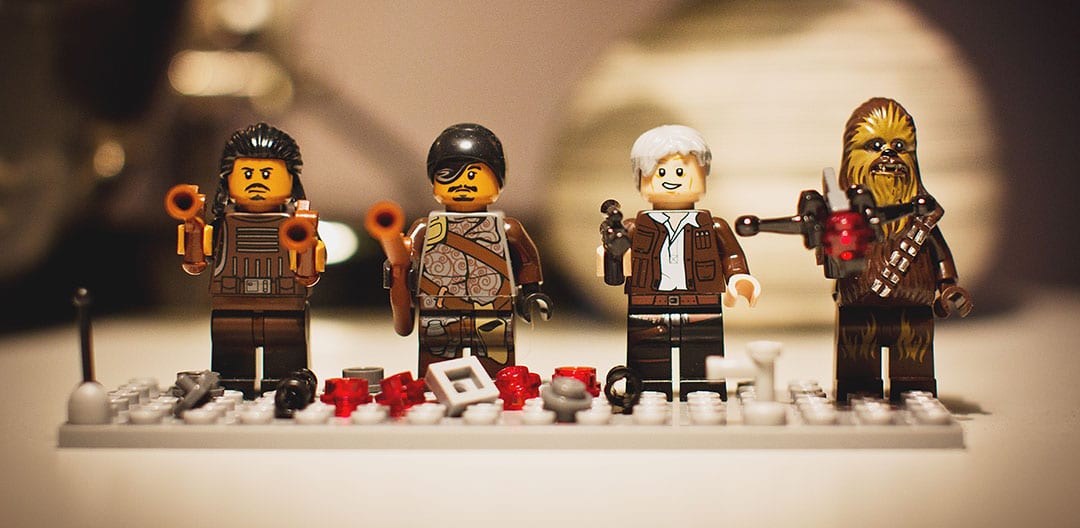 Loyalty marketers know that loyalty works - but do we understand why it works? Through research conducted by Rick Ferguson and delivered through the Loyalty Academy, we can begin to understand the clear connections between seminal research studies in behavioral science and loyalty marketing best practices put forth by the industry's founding fathers. In his latest column, Bill Hanifin explores how this knowledge informs his own work in customer loyalty.By Bill Hanifin
Loyalty marketers know that loyalty works - but do we understand why it works? Through research conducted by Rick Ferguson and delivered through the Loyalty Academy, we can begin to understand the clear connections between seminal research studies in behavioral science and loyalty marketing best practices put forth by the industry's founding fathers. In his latest column, Bill Hanifin explores how this knowledge informs his own work in customer loyalty.By Bill Hanifin
Anyone with children, grandchildren, nieces or nephews, will instantly identify with the word "why." If you’re a coach, teacher, or counselor, I’ll bet the same is true. Think about it - in any of these capacities, you might have answered a question, made a suggestion or, if you're a coach or teacher, delivered a solid dose of motivation, instruction or discipline.
Regardless of the circumstance, when you're all finished and pause for a response, it often comes back to you as "Why?" Young people have an annoying habit of asking "why" - but if you put your ego aside, thinking through the "next best answer" can unlock true wisdom.
With my children in their "twenty-somethings," I thought I had been long-since released from the prison of "Why." Then I hired a series of Millennials into my business and -guess what - it was Groundhog Day in my office. I value Millennials more than I can express. It's refreshing to be tested, and I've learned from them by discovering new or more efficient solutions for recurring problems.
I am also passionate about customer loyalty and loyalty marketing - a direct result of my opportunity to spend time with and learn from some of the "founding fathers" of the trade. People like Rick Barlow, Brian Woolf, Fred Reichheld and Don Peppers have taught me volumes about the core principles of developing customer loyalty. Over time, I realized these influencers shared a common point of view summarized in Brian Woolf’s well-documented assertion that “Man is an economic animal in search of self-importance."
As I've shared many tried and tested principles that we call "best practices" with my Millennial staff, I’ve been tested to go deeper to make the connection between what we say works and why it works. Through research completed by the Wise Marketer's Loyalty Academy faculty, we've discovered clear connections between the outcomes of studies in behavioral science and best practices put forth by the industry's founding fathers.
If you want to hear the entire story in detail, I encourage you to enroll in Rick Ferguson's course at the Loyalty Academy, "The Psychology of Loyalty." Rick led this research and created the material, which he delivers in detail in this fascinating course. You can sign up for Rick's course and many others at the Loyalty Academy website.
One closely held tenet of loyalty marketing is that successful programs must balance the varied stimulus of reward and recognition. Loyalty programs developed over the past two decades have tended to place more emphasis on reward than recognition, and perhaps it's not surprising that populations of consumers younger than Baby Boomers became temporarily bored by loyalty program structures.
The explosion of availability of personal technology and information transparency has reset the pattern consumers follow to purchase. Once thought to be a horizontal path where rewards could be placed at the end of the journey to transform prospects into repeat customers, consumers now practice a chaotic path to purchase.
The ability of any person with access to technology and the internet is to research your brand and form opinions while still completely off the brand's radar. Direct research of your web or e-commerce site is married with a filtering of social posts. Testing opinions with friends and contacts in social networks solidifies opinions and well-documented recommendations from trusted sources can lead to a visit to your store, whether online or offline. Purchase is the final step, and by the time you encounter many new customers, anything you might do to influence them with discounts, rewards and coupons might truly be margin eroding, marketing bribery.
Most of us are held accountable for our investment of marketing budget, and loyalty strategies are tailor-made to match objectives and desired customer behaviors to the customers who will respond with higher than average increases in value. We call this generation of incremental gross profit from a loyalty program the PFB (Program Financial Benefit) when costs of program operations are taken into consideration.
Behavior change is the central objective of any loyalty program. I like to say that when your program creates happier customers, you will in turn have a healthier business. That leads us back to answering the Why question of Loyalty Marketing. Why does what we believe works, really work?
Let me tell you first that if we can answer why loyalty marketing works, we might just find the Holy Grail of Loyalty Marketing - whether a "Buy Button" exists in the human brain. Our research has identified some of the markers of "Buy Button" DNA, and I have a short list to share here:
- The “Say-Do” gap has been scientifically documented. Consumers say they make purchase decisions on rational factors, but are often swayed by unconscious emotional factors. Emotion and reason are intertwined, but when in conflict, emotion wins every time.
- Loyalty programs provide the framework to build an emotional connection between brand and consumer. Offers are structured to build a relationship around the customer's emotional connection to the brand, and provide opportunities for the customer to rationalize their emotional choices.
- Sustainable loyalty efforts recognize the importance of identifying and triggering the emotional hotspot for consumers while providing repeated rational proof that they have made good choices.
- The basis of the four most common schedules of reinforcement in loyalty programs (fixed interval, fixed ratio, variable interval, and variable ratio) each were validated in BF Skinner’s behavioral research. Turns out that Skinner should be recognized for much more than the manipulation of white rats.
- The importance of "Earning Velocity" is supported through work done by Julian Rotter where he stated "The likelihood of behavior change is a function of Expectancy and Reinforcement Value," where Expectancy refers to the perceived chance to reach the reward and Reinforcement Value refers to the perceived value of the reward.
- The power of Gamification is grounded in something called the "Goal Gradient Effect." Clark Hull published studies that concluded that people tend to purchase more frequently the closer they get to earning a reward or reaching a goal. Beyond purchase behavior, there is impact on customer retention and faster re-engagement when connections are lost.
- Even the buzz about Customer Engagement has foundation in behavioral psychology. Professors Dreze and Nunez published studies showing “the perception of progress towards a goal increases the effort to achieve the goal." Humans don't like to start from "zero," and smart engagement tactics recognize what is needed to give consumers a head start towards a deeper relationship.
- We also found through research that loyalty program redemptions are good, while breakage is, in a word, bad. While breakage in any program is natural and inevitable, seeking to increase breakage levels for financial gain is a poor strategy. We have confirmation through research that a successful redemption episode is the single most important activity in creating an emotional connection between brand and customer.
- Rewards and positive experiences in the delivery of rewards leads to long-term positive emotional memories. The Amygdala is the brain center responsible for accumulating long term subconscious emotional memories.
When one my favorite Millennials asks me why a specific best practice works, it's heartening to respond with conviction that the key mechanics of loyalty marketing are grounded in classic human behavioral theory.
If you're pressed for time and a quicker answer than sharing this article, you can explain that while emotions rule our human nature, we need periodic rational checkpoints to remain content with our decisions. Successful loyalty strategies need to take this phenomena of human behavior into account.
The ultimate answer to why might be Trust. Building relationships based on trust and reciprocity will help to cement emotional connections with customers to your band which are sustainable over time.
Bill Hanifin is COO of the Wise Marketer Group and CEO of Hanifin Loyalty.




